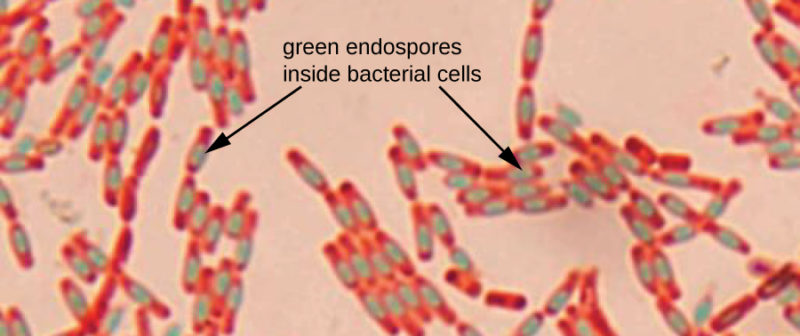What is the difference between bacterial endospores and vegetative cells?
Endospores play a vital role in gram-positive bacterial during unfavorable conditions. The endospores tend to be tough, dormant, and resistant to harsh weather. Both vegetative cells and endospores have close similarities but quite different.
The core difference between bacterial endospores and vegetative cells is that bacterial endospores are refractive while vegetative cells are non-refractive.

Bacterial Endospores Definition
Bacterial endospores have thick spores, cortex, spore coat, and exosporium. They are typically common in gram-positive bacteria since they are refractive in nature. The help bacterial to endure harsh weather conditions.
Vegetative Cells Definition
Vegetative cells are typically gram-positive bacterial while a few are gram-negative bacteria. They are also non-refractive in nature. Can always maintain above pH 7.0
Comparison Chart: Bacterial Endospores Vs Vegetative Cells
| Basic Terms | Bacterial Endospores | Vegetative Cells |
| Structures | Thick spores marked by the cortex, spore coat, and core wall | Either gram-positive or gram-negative bacteria |
| Appearance under microscope | Refractive | Nonrefractive |
| Amount of calcium | High level | Low level |
| Dipicolinic acid | Present | Absent |
| Enzyme activities | Very low | Very high |
| Respiration rate | Absent | Quite high |
| Macromolecules | Do not happen | Tend to occur |
| RNA presence | Absent | Present |
| Heat resistance capacity | Very high | Very low |
| Radiation resistance | Very high resistance | Quite low |
| Chemical resistance | Very high | Very low |
| Staining properties | Unstainable with common dyes | Stainable with common dyes |
| Lysosome Enzyme effect | Resistance to lysosome | Very sensitive |
| Water content level | Very low | Very high |
| Cytoplasm pH | About 5.5 to 6.0 | Above 7.0 |
| Small acid-soluble proteins | Present | Absent |
| DNA conformation | A form | B form |
Core Difference between Vegetative Cells and Bacterial Endospores
- Vegetative cells are non-refractive while bacterial endospores are refractive
- Vegetative cells have gram-positive or gram-negative bacteria while bacterial endospores are thick-like structures
- Bacterial endospores have a high level of calcium while vegetative cells have a low level of calcium
- The dipicolinico acid in bacterial endospores are present while in vegetative cells are absent
- The bacterial endospores have low enzymatic activities while in vegetative cells are quite high
- Vegetative cells have a high respiration rate while bacterial endospores have a low respiration rate
- Macromolecules synthesis occur in vegetative cells unlike in bacterial endospores
- The mRNA is present in vegetative cells but absent in bacterial endospores
- The bacterial endospores have a higher resistance to heat while vegetative cells have lower heat resistance
- Vegetative cells have lower resistance to radiation while bacterial endospores have a higher resistance
- Bacterial endospores have a higher resistance to chemicals while vegetative cells have a lower resistance
- Vegetative cells have staining properties with common bacterial dyes while bacterial endospores are unstainable.
- Vegetative cells are highly sensitive to lysosome enzyme while bacterial endospores are resistant to any action by lysosome
- Bacterial endospores have a high level of water while vegetative cells have a low water level.
- The DNA confirmation of vegetative cells is B-form while that of bacterial endospore is A-form.
You May Also Like:
- Difference between Gram-Positive and Gram-Negative Bacteria Cell Walls
- Difference between Algae and Fungi
- Difference between Chrolophyll and Chloroplast
Comparison Video
Summary
The structure of bacterial endospores and vegetative cells tend to be quite different. The main difference between vegetative cells and bacterial endospores is that vegetative cells typically occur in either gram-positive or gram-negative bacteria while bacterial endospores have thick spore marked with spore coat, cortex, and core wall.